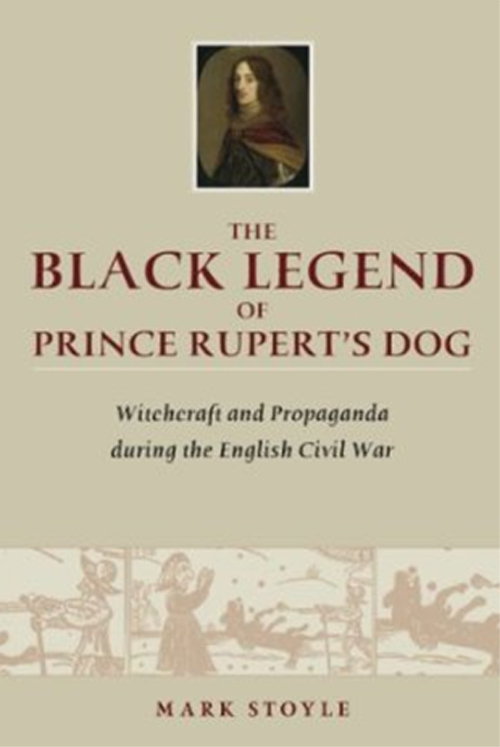Witchcraft and Propaganda during the English Civil War
Review

The Black Legend of Prince Rupert's Dog; Witchcraft and Propaganda during the English Civil War, Mark Stoyle, (University of Exeter Press, 2011) hardback, xiv, 240pp., £45.00, ISBN 978 0 85989 859 1
Mark Stoyle, Professor of Early Modern History at the University of Southampton, has published widely on the English Civil War but has other research interests including witchcraft. Here he describes the bizarre history of ‘Boy' the canine companion of Charles I's famous nephew, Prince Rupert of the Rhine, who like his master was suspected of wizardry. As might be expected this is a serious scholarly study, fully documented in over 30 pages of notes and with a bibliography listing manuscripts, collections of contemporary printed material, reports of the Historical Manuscripts Commission, printed primary sources, contemporary newsbooks, editions of documents and secondary works surprisingly often lacking places of publication. There is an index of some 12 pages and a chronology as well as 17 carefully chosen and nicely produced illustrations.
The book is divided into eight chapters, the earlier chapters reviewing past discussions of Rupert's dog, the attack on his reputation and suggestions that he possessed supernatural powers.
The central chapter (4) explains that the publication of a pamphlet Observations upon Prince Rupert's White Dog Called Boy in 1643 claimed that the dog was really a beautiful woman who had used magic to transform herself ‘into a dog'. Chapter 7 records ‘Boy's' death at Marston Moor in 1644 and the celebrations it provoked. The story is sensitively argued and the ramifications explored.
It is a fascinating book and the story will appeal widely. Unfortunately the price may deter individual readers, but encourage people to recognise the value of public libraries.

